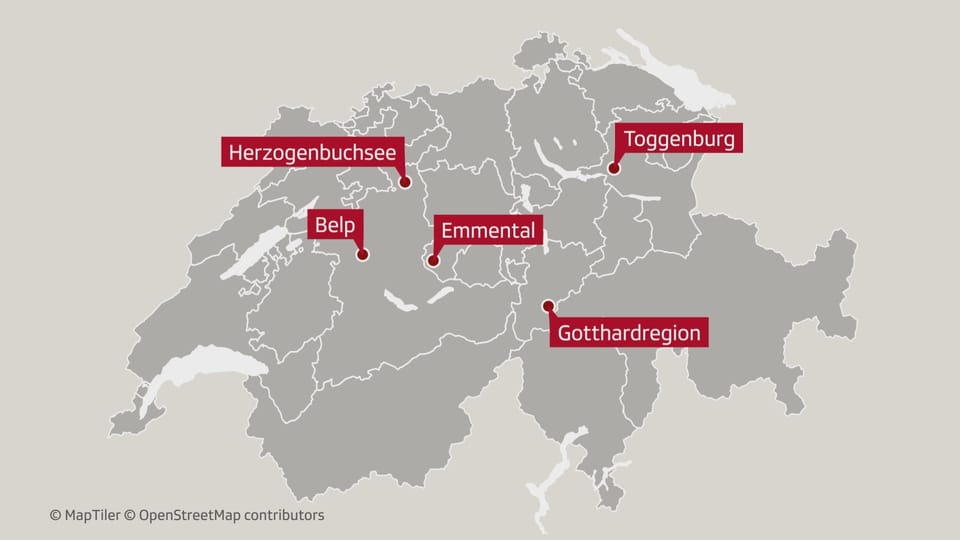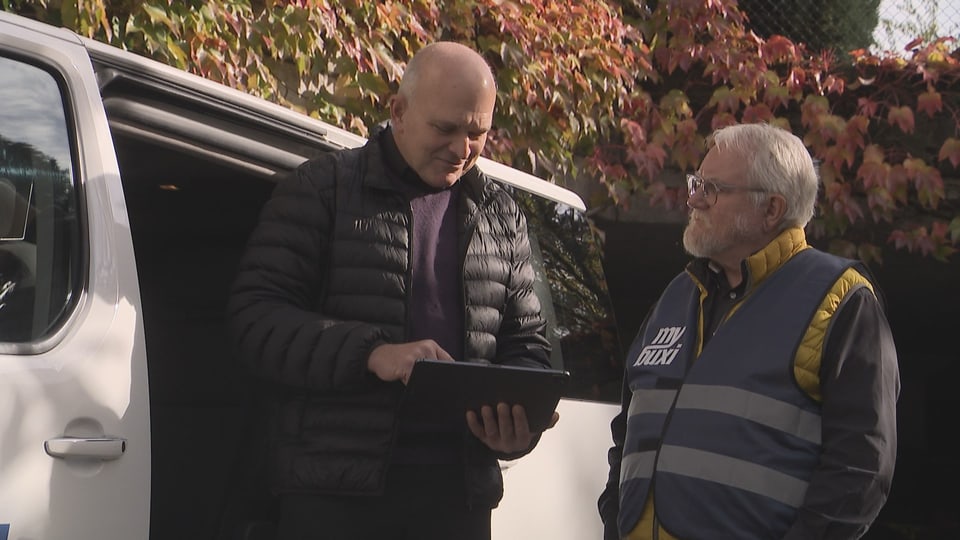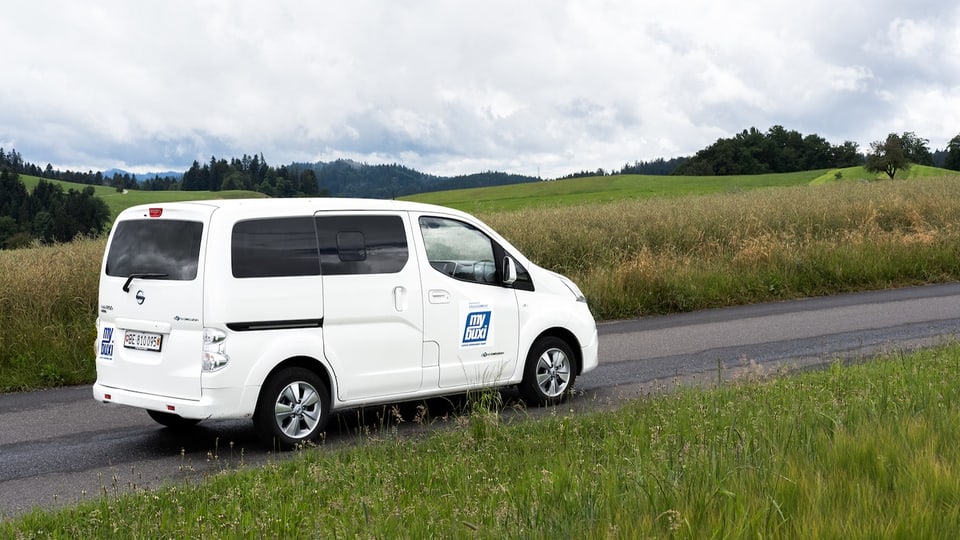Contents
A mixture of buses and taxis enables flexible mobility in poorly developed regions.
Staying mobile in old age, coming home late at night without a car after going to the cinema or not driving the children to volleyball training every week – this is not a given in rural, poorly developed regions. The Mybuxi is intended to provide a remedy – as an alternative to owning a car and as a supplement to public transport.
The Mybuxi can either be pre-ordered or booked immediately via the app – like a taxi. However, taxis are often only available in urban or tourist areas. The Mybuxi is also available in rural regions of Switzerland. The company now has 10,000 customers in five regions, who are transported from A to B by 100 drivers in twelve electric buses.

Legend:
Current operating areas
Source: MYBUXI
The company’s idea is that a Mybuxi is shared with other passengers if possible. These can be boarded on the way – like a bus. However, there are no fixed stops. Mybuxi is flexibly tailored to the needs of customers. Bundling trips makes the offer cheaper than a taxi.
From physics to the mobility industry
Mybuxi was launched in 2018 by Andreas Kronawitter. A physicist by training, the 55-year-old has been working in the mobility industry for over two decades. He has worked for large public transport companies and is involved in various mobility organizations. What motivated him to found the company were the mountain regions that are poorly served by public transport and the fact that he was stuck in traffic jams by car.
In Switzerland we spend almost 100 billion on mobility every year.
Kronawitter believes that costs could be saved with new mobility offers. “In Switzerland we spend almost 100 billion francs on mobility every year. However, public transport and private vehicles are used relatively poorly. Private vehicles in particular are largely empty or stand around a lot,” says Andreas Kronawitter.
The 100 billion includes, for example, expenses when buying cars, public transport subsidies or expanding roads. The aim of Mybuxi’s offer is to create an alternative to owning a car, says Kronawitter. It should help reduce the number of vehicles on the roads and increase the number of people per vehicle. In addition, trips to train stations or stops should help ensure that public transport is used better.

Mybuxi is financed through ticket revenue, partner communities and private companies. “In Switzerland it is relatively easy to get money for an idea and try it out. But if you then want to implement this on a large scale, there are no financing instruments for it,” says the founder. In addition, strong federalism is accompanied by a variety of different regulations. This makes the offer more expensive.
Driving without a driver
In the long term, one thing is clear: the vehicles should drive driverless – the most pronounced form of automated driving. The advantage: more flexibility. There are no rest periods required and the vehicles do not necessarily have to return to their starting point after closing time. In addition, the laborious search for drivers and their deployment planning are eliminated – automated vehicles would be ready on demand at any time.
Nevertheless, automated driving is still a thing of the future for Mybuxi – the technology and probably the population are not ready yet. In the short term, the goal is to use the knowledge acquired and expand the offering to rural regions in Switzerland.
